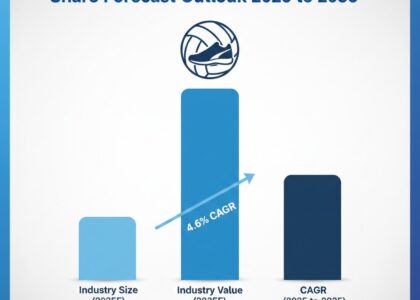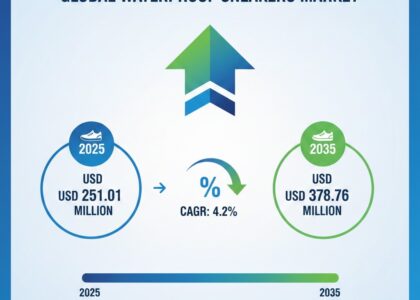The global AR VR software market is estimated to grow from USD 8.5 billion in 2025 to USD 36.2 billion by 2035, advancing at a compound annual growth rate (CAGR) of 15.8%. The market was previously valued at USD 11.4 billion in 2022, indicating consistent long-term momentum. This strong growth is attributed to the increasing integration of immersive technologies in gaming, healthcare, retail, real estate, education, and manufacturing sectors. As businesses and consumers alike demand more interactive, intuitive, and real-time digital experiences, the need for powerful AR and VR software platforms continues to rise.
AR (Augmented Reality) and VR (Virtual Reality) software solutions are enabling users to experience both real-world augmentation and fully immersive digital environments across a variety of applications. These platforms power everything from 3D modeling and virtual collaboration tools to real-time training simulations and interactive retail experiences. With the advancement of spatial computing, AI, 5G, and edge computing, AR VR software is becoming more powerful, responsive, and accessible across devices. Developers are leveraging these tools to create immersive content, enhance user engagement, and improve productivity in virtual workflows.
Organizations across industries are increasingly adopting AR VR software to accelerate digital transformation. In enterprise settings, AR VR applications are used for remote assistance, product visualization, virtual prototyping, and employee training. In consumer-facing sectors, such as retail and entertainment, immersive software enhances brand storytelling, virtual try-ons, and user-generated content. As technology infrastructure continues to mature and headset adoption expands, the market is expected to see growing demand from both enterprise and consumer segments.
Get Ahead with Our Report: Request Your Sample Now!
https://www.futuremarketinsights.com/reports/sample/rep-gb-18079
Market Trends
-
Rising demand for cross-platform AR VR development tools compatible with headsets, mobiles, and web-based interfaces
-
Growth of spatial computing software for gesture recognition, object mapping, and environment understanding
-
Surge in adoption of collaborative VR tools for training, education, and virtual meetings
-
Increasing popularity of cloud-based AR VR development environments for remote access and scalability
-
Emergence of no-code and low-code AR VR design platforms aimed at non-technical users
Driving Forces Behind Market Growth
-
Increasing deployment of immersive training and simulation tools in healthcare, defense, and manufacturing
-
Growing investment in metaverse platforms and mixed reality applications
-
Proliferation of AR-based marketing and customer engagement strategies across retail and e-commerce
-
Expanding adoption of 5G and edge computing to support real-time, low-latency experiences
-
Consumer demand for next-gen gaming and entertainment driven by high-quality immersive content

Challenges and Opportunities
-
Fragmentation of hardware ecosystems requiring adaptable and scalable software development
-
High initial costs and technical complexity of AR VR content creation limiting adoption in small businesses
-
Significant opportunities in enterprise digital twins, virtual production, and immersive commerce
-
Need for industry-specific AR VR content development kits and APIs to support diverse applications
-
Expanding potential in AI-enhanced AR VR applications for real-time analytics and personalized experiences
Exhaustive Market Report: A Complete Study
https://www.futuremarketinsights.com/reports/ar-vr-software-market
Recent Industry Developments
-
Launch of cloud-native AR development toolkits supporting real-time collaboration and 3D content management
-
Integration of AR VR software with AI-driven analytics tools for deeper user engagement insights
-
Strategic acquisitions of immersive content studios and AR VR software startups by major tech firms
-
New updates to popular AR VR engines offering enhanced realism, performance, and device compatibility
-
Development of lightweight AR SDKs for mobile-first environments and wearables
Regional Analysis
-
North America: Leading the global market due to strong presence of technology providers and early adoption across sectors; significant investment in enterprise AR VR solutions for training and operations
-
Europe: Rapid growth supported by EU initiatives in immersive media, smart manufacturing, and digital health; countries like Germany, France, and the UK focusing on industrial and educational use cases
-
Asia Pacific: Fastest-growing region led by consumer electronics innovation, rising tech-savvy population, and growing adoption in gaming, real estate, and education across China, Japan, India, and South Korea
-
Latin America: Expanding interest in immersive content creation, virtual tourism, and AR marketing; emerging applications in smart retail and digital education
-
Middle East & Africa: Increasing adoption in tourism, real estate visualization, and smart city initiatives; governments investing in virtual infrastructure for public services and remote learning






